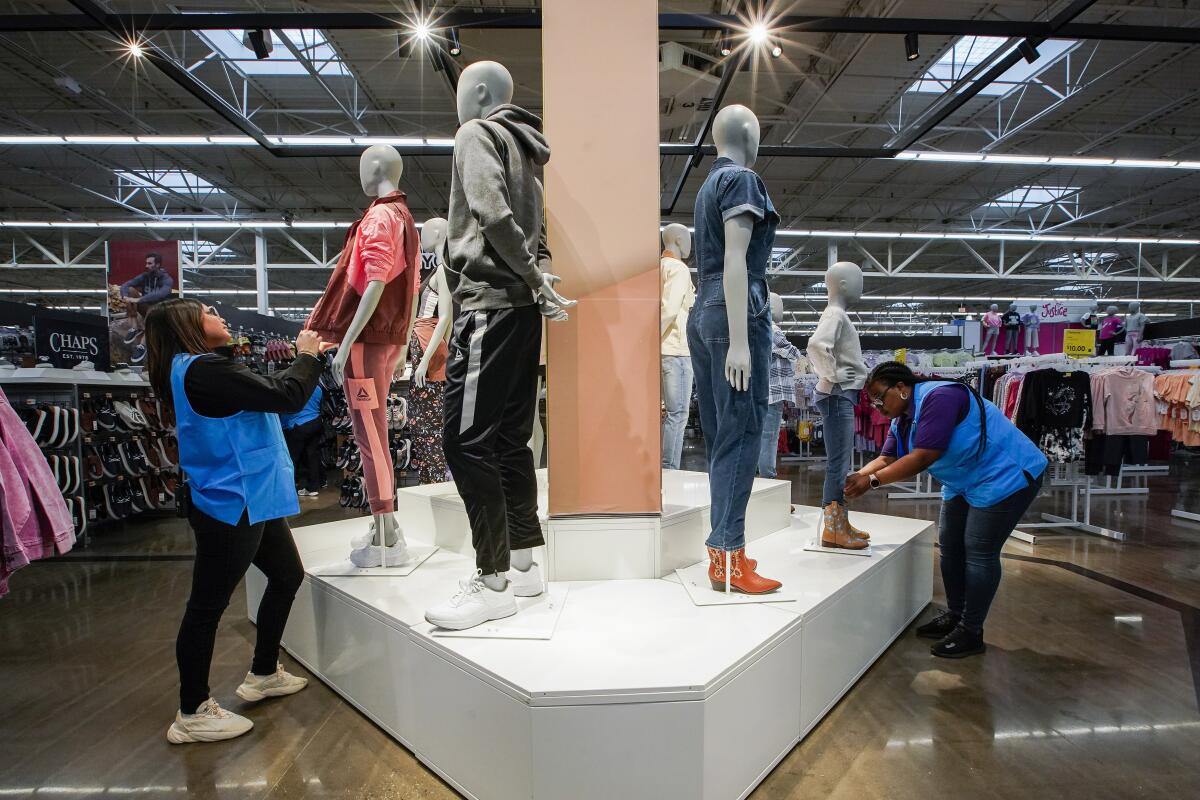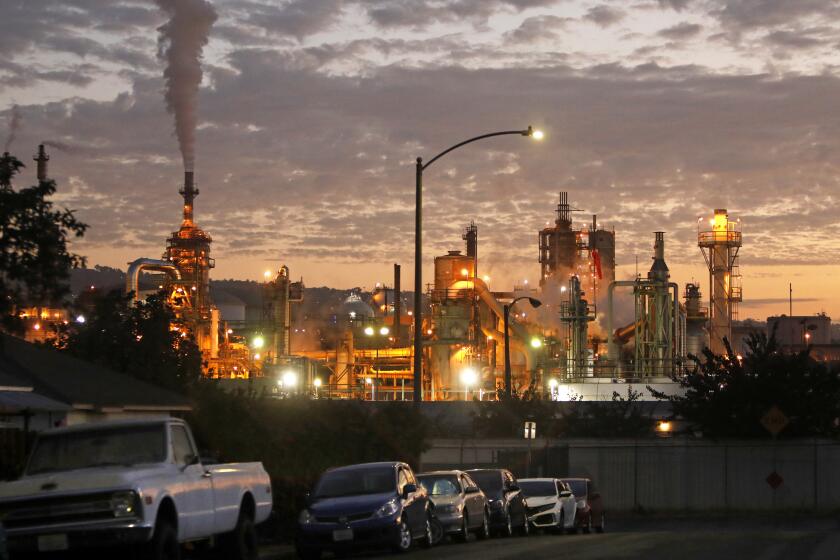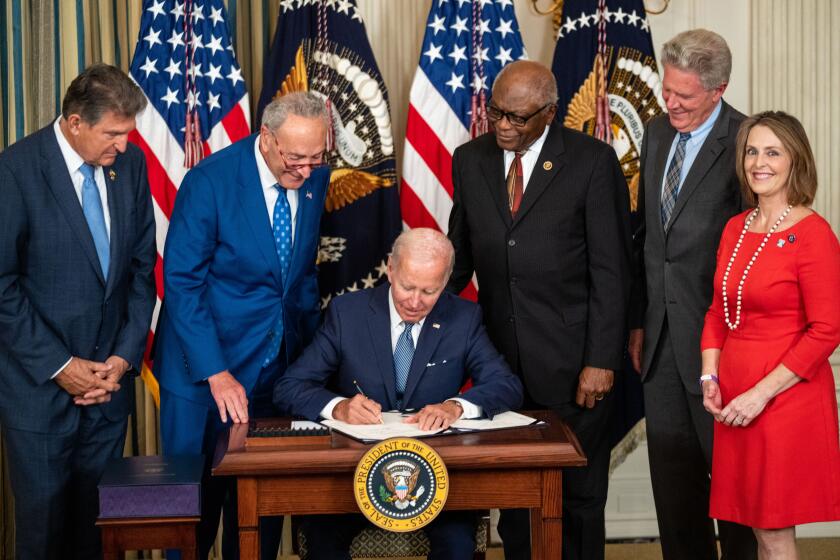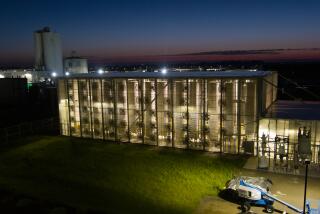Could your clothing help fight the climate crisis? Walmart is testing that idea

- Share via
Walmart Inc. is teaming up with a California startup to test technology that removes carbon dioxide from its supply chain, with plans to eventually turn that CO2 into yarn for clothing.
As part of a pilot project with Rubi Laboratories Inc. of San Leandro, Walmart will identify factories in its supply chain where carbon dioxide in waste gases can be captured using Rubi’s reactor systems.
Climate experts say the emerging technology of capturing CO2 from industrial smokestacks can divert billions of tons of greenhouse gas from the Earth’s atmosphere and store it deep underground or reuse it in ways yet to be discovered.
Most carbon-capture plants are operated by oil and gas companies, according to the Global CCS Institute, a think tank devoted to accelerating the use of the technology, and skeptics, including U.S. climate envoy John Kerry, have questioned whether carbon capture can play a significant role in combating the climate crisis.
Instead of injecting carbon dioxide underground, Rubi’s system uses biochemical processes to convert the gas to cellulose, the main substance in the walls of plant cells. It’s a technique inspired by the way trees use carbon dioxide to grow.
California is embracing carbon capture and storage technology to fight global warming, but critics say it will only increase oil production.
That cellulose is used to produce lyocell yarn, which can be made into textiles. After performance testing, Walmart and Rubi plan to develop a prototype apparel collection, according to a joint statement released Thursday. The pilot project runs through the end of 2024.
The goal is to “find a greener way to manufacture apparel,” Andrea Albright, Walmart’s executive vice president of sourcing, said in an interview. “If we can pull CO2 out of the atmosphere and put it into a raw material in a way that doesn’t cause an abundance of electricity usage or other implications, that’s compelling to us.”
That’s still a big if.
Rubi Chief Executive Neeka Mashouf, who founded the company with her twin sister Leila in 2021, said its equipment should be able to capture 90% of a factory’s carbon emissions. Although Rubi has successfully created yarn out of carbon emissions, it has yet to do so at scale.
The startup has raised $13.5 million from investors that include Talis Capital, Patagonia Inc.’s Tin Shed Ventures and Sweden’s H&M Group, and has partnerships with brands such as Nuuly by Urban Outfitters Inc.
Competing visions of the future are driving a wedge between clean energy companies and traditional environmentalists.
Carbon capture, too, is dealing with growing pains.
Direct air capture alone could be a nearly $1-trillion business in the next decade, according to BloombergNEF, but cost and scalability remain open questions. The nascent technology has also drawn fire from environmentalists who say it can be misconstrued as a license to continue burning fossil fuels.
Walmart is among many large companies looking to cut emissions to reach climate goals.
In 2020, the Bentonville, Ark., retailer said it planned to achieve net zero emissions across its operations — known as Scope 1 and Scope 2 emissions — by 2040. That target would zero out just 5% of Walmart’s total emissions, though.
To address Scope 3, emissions generated by suppliers and customers, Walmart launched Project Gigaton in 2017. Today that initiative has about 5,200 suppliers engaged in the goal of reducing or avoiding 1 billion metric tons of carbon dioxide equivalent by 2030.
But for now, the company’s supply chains still rely heavily on manufacturing processes that generate carbon.
Price could prove another challenge for Walmart and Rubi: Walmart shoppers are used to affordable clothing.
Albright said she’s confident the retailer will be able to turn a profit on apparel from its Rubi collaboration, and Neeka Mashouf said Rubi expects to be cost-competitive with existing textiles. Although Neeka and her sister came to the startup world from a science and engineering background, they learned about the fashion business growing up around their family’s brand, Bebe Stores.
“Affordability is really key,” Mashouf said. “We developed the technology to focus on making that possible from a unit-economics perspective.”
More to Read
Inside the business of entertainment
The Wide Shot brings you news, analysis and insights on everything from streaming wars to production — and what it all means for the future.
You may occasionally receive promotional content from the Los Angeles Times.












